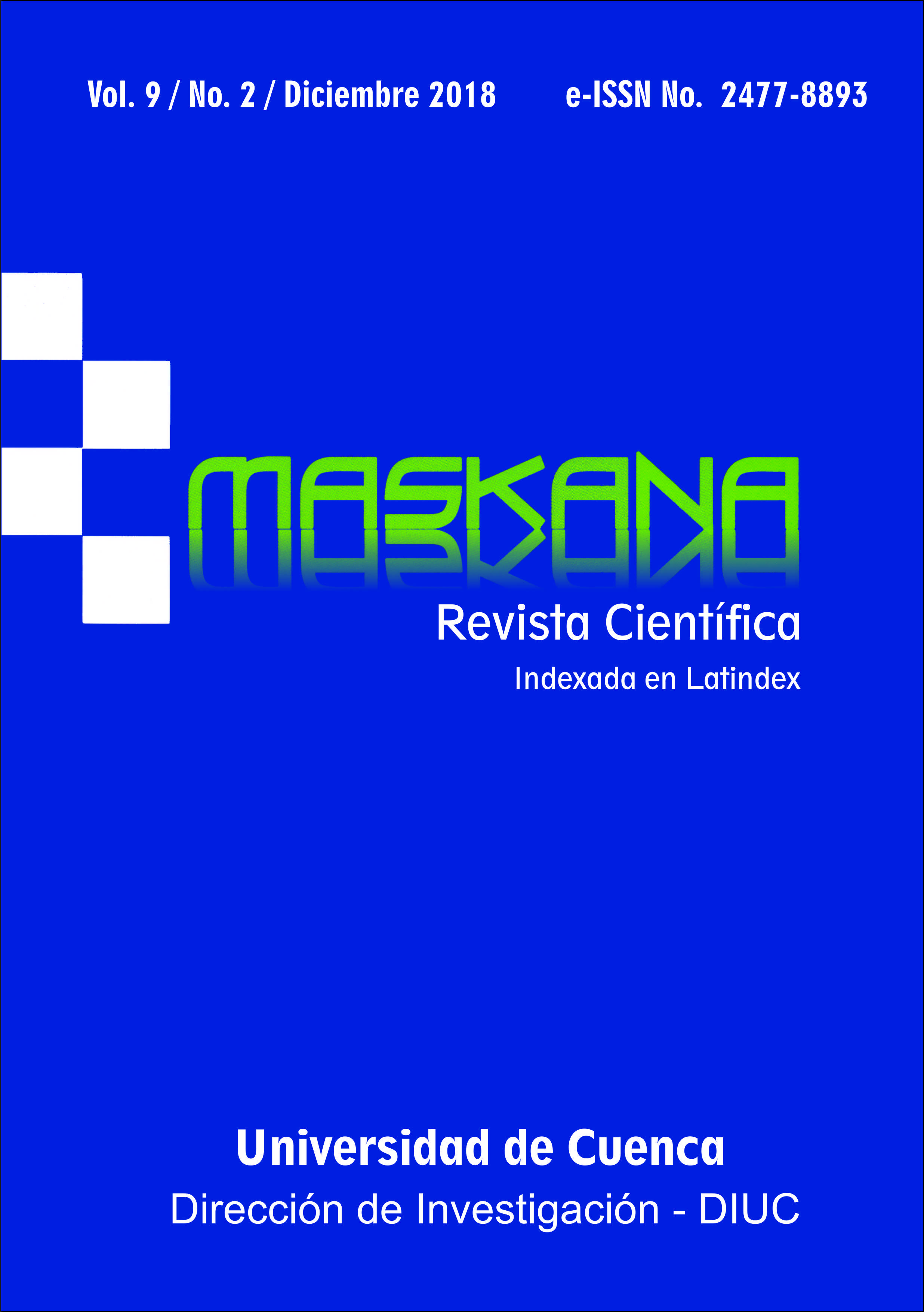Unidimensional, non-stationary modeling of a high mountain river in southern Ecuador
DOI:
https://doi.org/10.18537/mskn.09.02.08Keywords:
1D river modelling, HEC-RAS, Mike11, high-mountain river, EcuadorAbstract
Floods represent a severe cause of deaths and economic loss. In order to prevent, mitigate, and reduce flood risks and their consequences, hydraulic models allow analysing and mapping floods. The results of an appropriate model that works under local conditions are a valuable tool for local governments leading to sustainable management of floodplains. Around the world, high-mountain rivers have been poorly modelled; their orography and data scarcity present an extra research difficulty. Considering that all one-dimensional models assume that the river bed slope is small, this study evaluated two widely applied one-dimensional models: Mike11 and HEC-RAS, for modelling a high mountain river. Their best configuration under complex topographical conditions and their potential use was assessed by calibration and validation of the models. We found that the HEC-RAS model was not able to define a stable solution of the hydrodynamic modelling of the river, while Mike11 yielded stable results. Furthermore, the validation of the Mike11 model showed good performance. This study sets a precedent in the 1D modelling of high-mountain rivers with data scarcity.
Downloads
Metrics
References
Abbott, M., & Ionescu, F. (1967). On the numerical computation of nearly horizontal flows. Journal of Hydraulic Research, 5(2), 97-117.
Alaghmand, S., Abdullah, R., Abustan, I., & Eslamian, S. (2012). Comparison between capabilities of HEC-RAS and MIKE11 hydraulic models in river flood risk modelling (a case study of Sungai Kayu Ara River basin, Malaysia). International Journal of Hydrology Science and Technology, 2(3), 270-291. http://doi.org/10.1504/IJHST.2012.049187
Andrei, A., Robert, B., & Erika, B. (2017). Numerical limitations of 1D hydraulic models using MIKE11 or HEC-RAS software - Case study of Baraolt River, Romania. In: IOP Conference Series: Materials Science and Engineering. http://doi.org/10.1088/1757-899X/245/7/072010
Apel, H., Aronica, G., Kreibich, H., & Thieken, A. (2009). Flood risk analyses - how detailed do we need to be? Natural Hazards, 49(1), 79-98.
Barkau, R. (1996). UNET: One-dimensional unsteady flow through a full network of open channels. User’s manual. California. Retrieved from http://oai.dtic.mil/oai/oai?verb=getRecord&metadataPrefix=html&identifier=ADA315684
Bennett, T. H., Walton, R., Dickerson, P. D., & Howard, J. W. (2004). Comparison of HEC-RAS and MIKE11 unsteady flow modeling for the Tillamook Valley. In: Critical Transitions in Water and Environmental Resources Management (pp. 1-8). ASCE. Retrieved from http://cedb.asce.org/cgi/WWWdisplay.cgi?142251
Brunner, G. (2010). HEC-RAS, River analysis system. Hydraulic reference manual. Version 4.1. Davis, CA: U.S. Army Corps of Engineers. Retrieved from http://www.hec.usace.army.mil/ software/hec-ras/documentation/hec-ras_4.1_reference_manual.pdf
Criss, R. E., & Winston, W. E. (2008). Do Nash values have value? Discussion and alternate proposals. Hydrological Processes, 22(14), 2723-2725. http://doi.org/10.1002/hyp.7072
Cunha, L., & Krajewski, W. (2011). A framework for flood risk assessment under nonstationary conditions or in the absence of historical data. Journal of Flood Risk Management, 4(1), 3-22.
DHI. (2007). Mike 11. A modelling system for rivers and channels. Reference manual. Horsholm, Denmark: Danish Hydraulic Institute
DHI. (2017). MIKE 2017 Service Pack 2. Horsholm, Denmark: Danish Hydraulic Institute. Available at https://www.mikepoweredbydhi.com/download/mike-2017
Dottori, F., Szewczyk, W., Ciscar, J.-C., Zhao, F., Alfieri, L., Hirabayashi, Y., … Feyen, L. (2018). Increased human and economic losses from river flooding with anthropogenic warming. Nature Climate Change, 8(9), 781-786. http://doi.org/10.1038/s41558-018-0257-z
FEMA. (2018). Hydraulic numerical models meeting the minimum requirement of national flood insurance program. Retrieved from https://www.fema.gov/hydraulic-numerical-models-meeting-minimum-requirement-national-flood-insurance-program
Finaud-Guyot, P., Delenne, C., Guinot, V., & Llovel, C. (2011). 1D-2D coupling for river flow modeling. Comptes Rendus - Mécanique, 339(4), 226-234. http://doi.org/10.1016/j.crme.2011.02.001
Gilles, D., Young, N., & Schroeder, H. (2012). Inundation mapping initiatives of the Iowa Flood Center: Statewide coverage and detailed urban flooding analysis. Water, 4(1), 85-106.
Guha-Sapir, D., Hoyois, P., & Below, R. (2011). Annual disaster statistical review 2010: The numbers and trends. Brussels, Belgium: Centre for Research on the Epidemiology of Disasters (CRED), Université Catholique de Louvain. Available at cred.be/sites/default/files/ADSR_2010.pdf
Gupta, H. V, Kling, H., Yilmaz, K. K., & Martinez, G. F. (2009). Decomposition of the mean squared error and NSE performance criteria: Implications for improving hydrological modelling. Journal of Hydrology, 377, 80-91.
Ohl, C. A., & Tapsell, S. (2000). Flooding and human health. BMJ (Clinical Research Ed.), 321(7270), 1167-8. https://doi.org/10.1136/bmj.321.7270.1167
Pender, G., & Néelz, S. (2007). Use of computer models of flood inundation to facilitate communication in flood risk management. Environmental Hazards, 7(2), 106-114.
Vidal, J.-P., Moisan, S., Faure, J.-B., & Dartus, D. (2007). River model calibration, from guidelines to operational support tools. Environmental Modelling & Software, 22(11), 1628-1640. http://doi.org/10.1016/j.envsoft.2006.12.003
Vojinovic, Z., & Seyoum, S. (2011). Effects of model schematisation, geometry and parameter values on urban flood modelling. Water Science & Technology, 63(3), 462-467.
Willems, P. (2009). A time series tool to support the multi-criteria performance evaluation of rainfall-runoff models. Environmental Modelling & Software, 24(3), 311-321. http://doi.org/10.1016/j.envsoft.2008.09.005
Willems, P. (2011). Modelling guidelines for water engineering. Chapter 4. Model calibration and validation. Leuven, Belgium: Katholieke Universiteit Leuven, Faculty of Engineering.
Zambrano-Bigiarini, M. (2017). hydroGOF R package. Available at: http://hzambran.github.io/hydroGOF/
Published
How to Cite
Issue
Section
License
Copyright © Autors. Creative Commons Attribution 4.0 License. for any article submitted from 6 June 2017 onwards. For manuscripts submitted before, the CC BY 3.0 License was used.
![]()
You are free to:
 |
Share — copy and redistribute the material in any medium or format |
 |
Adapt — remix, transform, and build upon the material for any purpose, even commercially. |
Under the following conditions:
 |
Attribution — You must give appropriate credit, provide a link to the licence, and indicate if changes were made. You may do so in any reasonable manner, but not in any way that suggests the licenser endorses you or your use. |
| No additional restrictions — You may not apply legal terms or technological measures that legally restrict others from doing anything the licence permits. |









